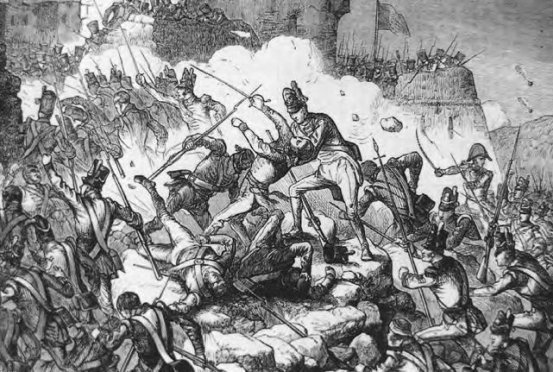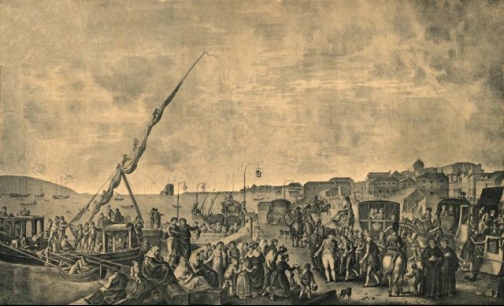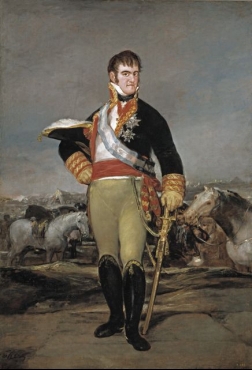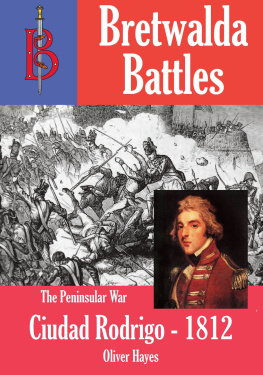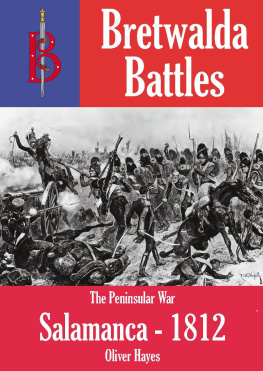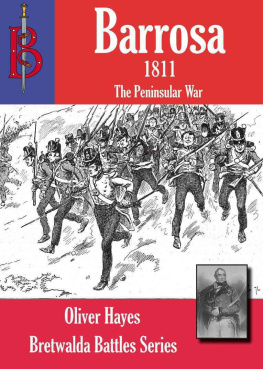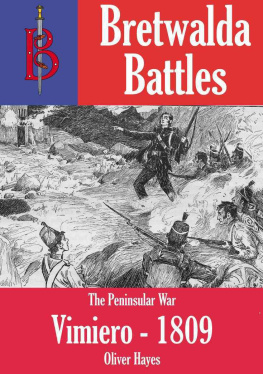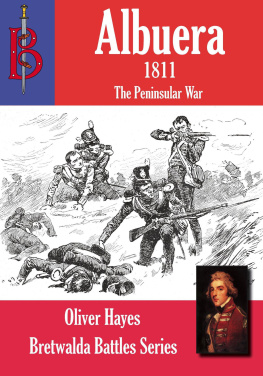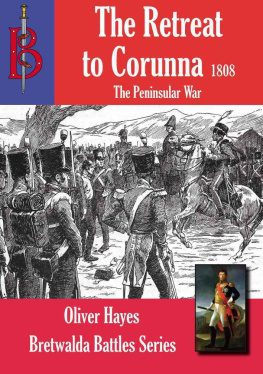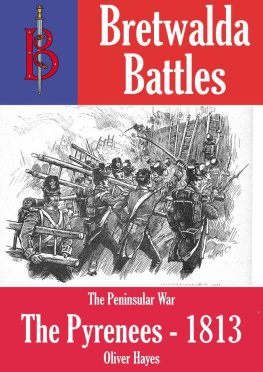Bretwalda Battles
The Peninsular War
The Siege of Ciudad Rodrgio
by
Oliver Hayes
*****************
Published by Bretwalda Books
Website : Facebook : Twitter
This ebook is licensed for your personal enjoyment only. This ebook may not be re-sold or given away to other people. If you would like to share this book with another person, please purchase an additional copy for each person. If you're reading this book and did not purchase it, or it was not purchased for your use only, then please purchase your own copy. Thank you for respecting the hard work of this author.
First Published 2014
Copyright Bretwalda Books 2014
Oliver Hayes asserts his moral rights to be regarded as the author of this work.
ISB N 978-1-909698-77-2
*****************
Contents
************
The Peninsular War
The Madrid Uprising was the first serious bloodshed in what was to become the Peninsular War, the struggle that wracked the Iberian Peninsula from 1808 to 1814. That war was but one part of the wider Napoleonic Wars that engulfed Europe in a series of wars and campaigns that lasted almost 20 years and stretched from the Atlantic to Moscow and reached overseas to India, the Caribbean and the Near East. But although the Peninsular War was a part of the wider conflict, it had some unique characteristics that made it a peculiarly savage and hard-fought conflict.
In the earlier stages of the Napoleonic Wars, Spain had remained neutral or actively taken the side of France against the various coalitions that sought to crush Napoleon, the self-proclaimed Emperor of the French. Spain saw the opportunity to make gains for herself, while the French had no ambitions south of the Pyrenees. The situation began to change in 1807. Napoleon stood triumphant in Europe having defeated Prussia, Austria and Russia on the battlefield and having cowed the smaller states into submission. His only remaining enemy was Britain, and there he had a problem.
In 1805 Britain's Admiral Nelson had crushed the combined fleets of France and Spain at the Battle of Trafalgar. As a result, Napoleon had no chance of invading Britain with his magnificent army. Instead he sought to bring Britain to peace talks by crippling her trade. By blocking every European port to British merchant ships, Napoleon believed, he would do so much damage to British wealth that peace on his terms would be inevitable. Not all the European countries wanted to join such a blockade, but one by one they succumbed to Napoleon's threats and bluster. By October 1807 only Portugal still refused to join this Continental System, as it was known.
In November, Napoleon agreed a treaty with the Spanish Prime Minister, Manuel de Godoy - who was also the lover of the Spanish Queen Maria Louisa. In return for French troops being allowed to march through Spain to invade Portugal, the Spanish would get the Portuguese fleet and various overseas colonies, and as an added inducement Portugal would be divided into three minor states under Spanish domination.
The Portuguese did not wait about to be destroyed. Queen Maria I fled from Lisbon on 29 November along with her family, the Portuguese fleet, most of the merchant ships and thousands of soldiers. She moved to the Portuguese colony of Brazil where she set up court along with her son and regent John. John, later King John VI, appealed to Britain for help. John left orders in Portugal that there should be no resistance to the French in order to avoid bloodshed. The royal flight was, he said, only temporary and soon all would be right.
The embarkation of the Portuguese Royal Family at Lisbon. Queen Maria and the Regent John fled in the face of overwhelming French force and headed to Brazil from where they appealed to Britain for help.
Napoleon, meanwhile, had become more ambitious. Rather than merely close the Iberian ports to British trade, he now wanted to gain complete control of the Peninsula by merging Portugal into Spain and making his own brother, Joseph, King of Spain. His moves were made slowly. First larger numbers of French soldiers marched into Spain, claiming to be on their way to Portugal to occupy that country. In February Napoleon ordered his men in Spain to seize key Spanish fortresses and military bases using the pretext that they were needed to safeguard the supply lines to the French troops in Portugal.
King Charles IV of Spain began to grow alarmed as the numbers of French troops in Spain and Portugal passed the 100,000 mark, and an ominous 80% of them were in Spain. At the same time Spain was suffering an economic crisis, caused largely by the loss of trade to the American colonies that had followed the Battle of Trafalgar. The populace and many nobles blamed Godoy for the pro-French policy that was causing such poverty and hardship. He was already unpopular, and the French troops entering Spain made him even more so.
In the spring of 1808 Charles, Maria Louisa and Godoy were staying in the small palace at the town of Aranjuez. The trio held discussions about the deteriorating situation, and decided to follow the lead of the Portuguese royal family. Messages were sent to Cadiz ordering the Spanish fleet there to prepare to carry the royal family and court to the Spanish colony of Spain. Spain at this date was at peace with Britain, so the Royal Navy would not intervene, and might even help.
The message to Cadiz became public and there were protests among the nobility and population, neither of whom wanted to be abandoned to the dubious mercies of the French. On 17 March a mob stormed the palace, looted it and hurled insults at the King and Queen - though Godoy was nowhere to be found. Soldiers moved in to restore order, but the Spanish officers made no secret of the fact that they sympathised with the rioters. Godoy's commoner mistress, one Pepita, was found but she refused to say where Godoy had gone.
The tense situation was beginning to relax when a soldier found Godoy hiding in a cupboard. The hapless Prime Minister was dragged out, kicked down a flight of stairs and manhandled to the room where the King and Queen were being held. He was thrown to the floor at bayonet point. To save Godoy's life, Charles IV sacked him on the spot and ordered him to be put in prison. The news that Godoy had been found provoked renewed rioting and a group of nobles at court persuaded Charles that the only way to save Godoy was for him to abdicate in favour of his son, Ferdinand. Many nobles opposed the move and urged Charles to take back the throne.
King Ferdinand VII of Spain came to the throne amidst civil turmoil and government bankruptcy. He subsequently played straight into Napoleon's hands and was forced to abdicate as King of Spain.
At this point Queen Maria Louisa sent a trusted servant to carry a letter to the nearest French garrison with an appeal for help. Marshal Joachim Murat was surprised to receive the note, but acted fast. On 22 March Murat and his men arrived, drove off the mob and the Spanish soldiers and took possession of Charles, Maria Louisa and Godoy. Charles promptly announced that he had been forced to abdicate, and now repudiated the move. Meanwhile, the news that Charles had abdicated had reached Madrid, where loud demonstrations in favour of the new King Ferdinand took place. Murat declared that given the confused situation, France did not recognise Ferdinand as King, but neither did it not recognise him.
